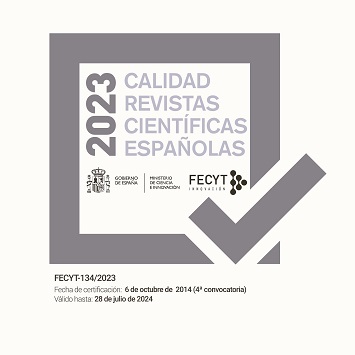LA ONTOLOGÍA DE LESSING Y LAS METÁFORAS DE LA DESHUMANIZACIÓN
Abstract
This article exposes and analyzes G.E.Lessing's social ontology, especially as it appears in the Dramatic Poem Nathan the Wise. Human life and affairs are characterized by a polarity between the essential human conditon and the various religious and national peculiarities. Religious and patriotic fanatism deform true humanity and make those different paths lead against each other, while they schould instead carry mankind to the same haben, that of the sense of humanness. Lessing addresses this problematique by using methaphors, many of them in the form of parabbles or allegories: clothes and ministries for civic vitues; colours and perfumes for pedagogical and local facilities; coins for the truth; a building with numerous windows for illumination and doors for free entrance for wise and tolerant governement; etc. Lessing places in the forfront of his discussion the problems of intolerance between the three Abrahamic religions and their hearty and mutual enmity.Downloads
Las obras que se publican en esta revista están sujetas a los siguientes términos:
1. El Servicio de Publicaciones de la Universidad de Murcia (la editorial) conserva los derechos patrimoniales (copyright) de las obras publicadas, y favorece y permite la reutilización de las mismas bajo la licencia de uso indicada en el punto 2.
2. Las obras se publican en la edición electrónica de la revista bajo una licencia Creative Commons Reconocimiento-NoComercial-SinObraDerivada 3.0 España (texto legal). Se pueden copiar, usar, difundir, transmitir y exponer públicamente, siempre que: i) se cite la autoría y la fuente original de su publicación (revista, editorial y URL de la obra); ii) no se usen para fines comerciales; iii) se mencione la existencia y especificaciones de esta licencia de uso.
3. Condiciones de auto-archivo. Se permite y se anima a los autores a difundir electrónicamente las versiones pre-print (versión antes de ser evaluada) y/o post-print (versión evaluada y aceptada para su publicación) de sus obras antes de su publicación, ya que favorece su circulación y difusión más temprana y con ello un posible aumento en su citación y alcance entre la comunidad académica. Color RoMEO: verde.












